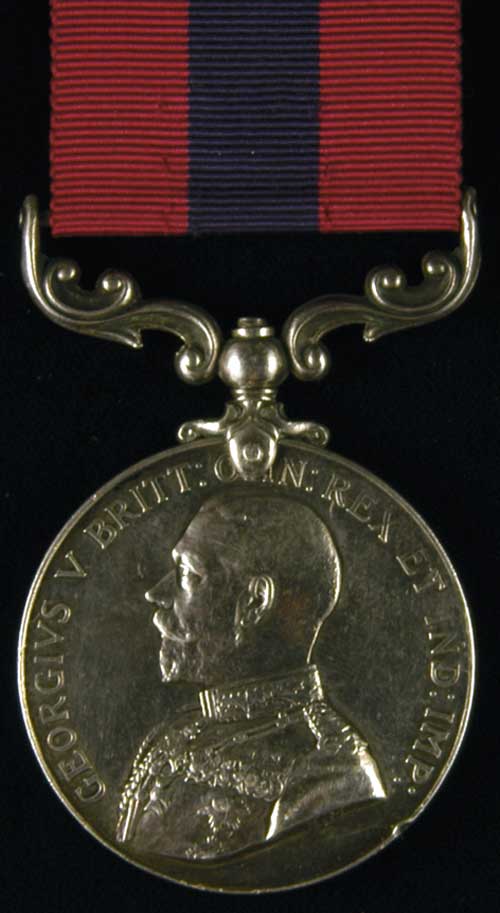
Auction: 7012 - Orders, Decorations, Medals & Militaria
Lot: 364
A Scarce Great War ´1918 Canal du Nord´ D.C.M. to Lance Sergeant W. Roberts, Welsh Guards, One of Only Twenty-Two Awarded to the Regiment For the Great War Distinguished Conduct Medal, G.V.R. (395 Cpl.-Sjt. W. Roberts. 1/W. Gds.), nearly very fne, with copy of service papers Estimate £ 1,600-1,800 D.C.M. London Gazette 11.3.1920 395 Cpl. (L./Sjt) W. Roberts. 1st Bn. W. Gds (Brownhills). ´For conspicuous devotion to duty and gallant conduct during the recent advance and particularly at the Canal du Nord on 18th Sept, 1918, when in charge of a platoon. The platoon came under heavy shell fire and suffered severe casualties. Though wounded, he personally supervised the collection of the wounded, and it was owing to his coolness and skilful handling of his men that the relief was properly completed.´ 395 Lance Sergeant William Roberts, D.C.M., born Brownhills, Staffordshire; enlisted Grenadier Guards, 9.11.1914; transferred Welsh Guards, 27.2.1915; served during the Great War with the regiment in the French Theatre of War, 17.8.1915-6.2.1917 and 31.3.1918-11.3.1919 (received an accidental bayonet wound, 23.9.1916); the latter service included the Guards Division advance to the Canal du Nord in preparation for the assault on the Hindenburg Line, the advance ´started on 2 September when the 2nd and 3rd Guards Brigades concentrated at Ecoust. At 5.20am the next day they attacked behind a barrage, which rolled forward at a rate of 100 yards every four minutes. Although the country was crisscrossed with old trenches, capable of vigorous defence, there was little or no opposition that day. The troops found nothing in front of them except numberless dead horses, a few corpses and a plague of flies. The Guardsmen were cautious, suspecting a trap, some new surprise sprung by a skilful enemy. But it soon became clear that the Germans had retreated and that the task was to follow them as closely and as fast as possible, and by 6.45am they had advanced 2,000 yards. During the morning the Battalion, now under command of Lieutenant-Colonel R.E.C. Luxmoore-Ball, reached the village of Lagnicourt and sent forward patrols to some high ground to the east of it. The ridge was unoccupied, and at 1pm the whole Brigade advanced again to the next ridge, where an outpost line was formed for the night. The only opposition was from a little long-range shelling. The advance over this rolling country, a succession of ridges continued the next day with No 3 Company leading. They gained another 5,000 yards when they were held up on a ridge east of Boursies by machine gun fire, and the enemy was seen in considerable numbers on the ridge beyond. The Battalion was now closing up on the Canal du Nord, and after their almost free run of the last two days, enemy resistance was stiffening. At 6.30pm, 2nd Battalion Scots Guards came up in support, and under cover of an artillery barrage the opposite ridge was finally gained. It was now 5 September. In the last two days the Guards Division had advanced five miles and a total of 15 miles since leaving Boyelles on 24 August. They were now in front of the Hindenburg Line as planned, and against the Canal du Nord where it turned south of the line at Havrincourt´ (The Welsh Guards, J. Retallack, refers); Lance Corporal 18.12.1915; Lance Sergeant 23.8.1918; discharged 31.3.1920
Sold for
£1,200




